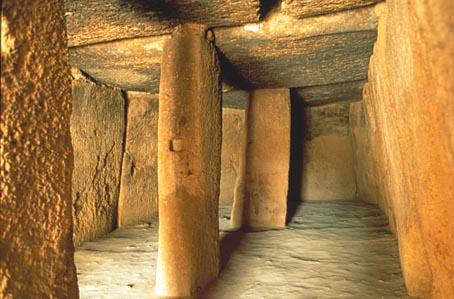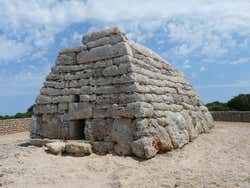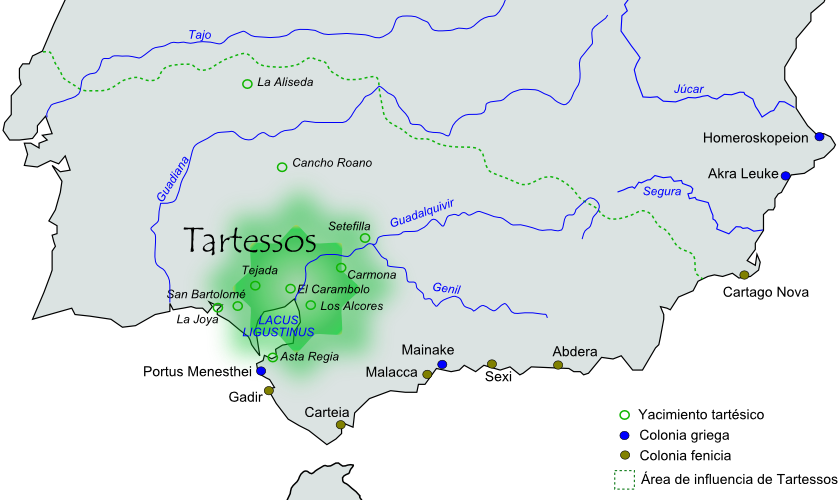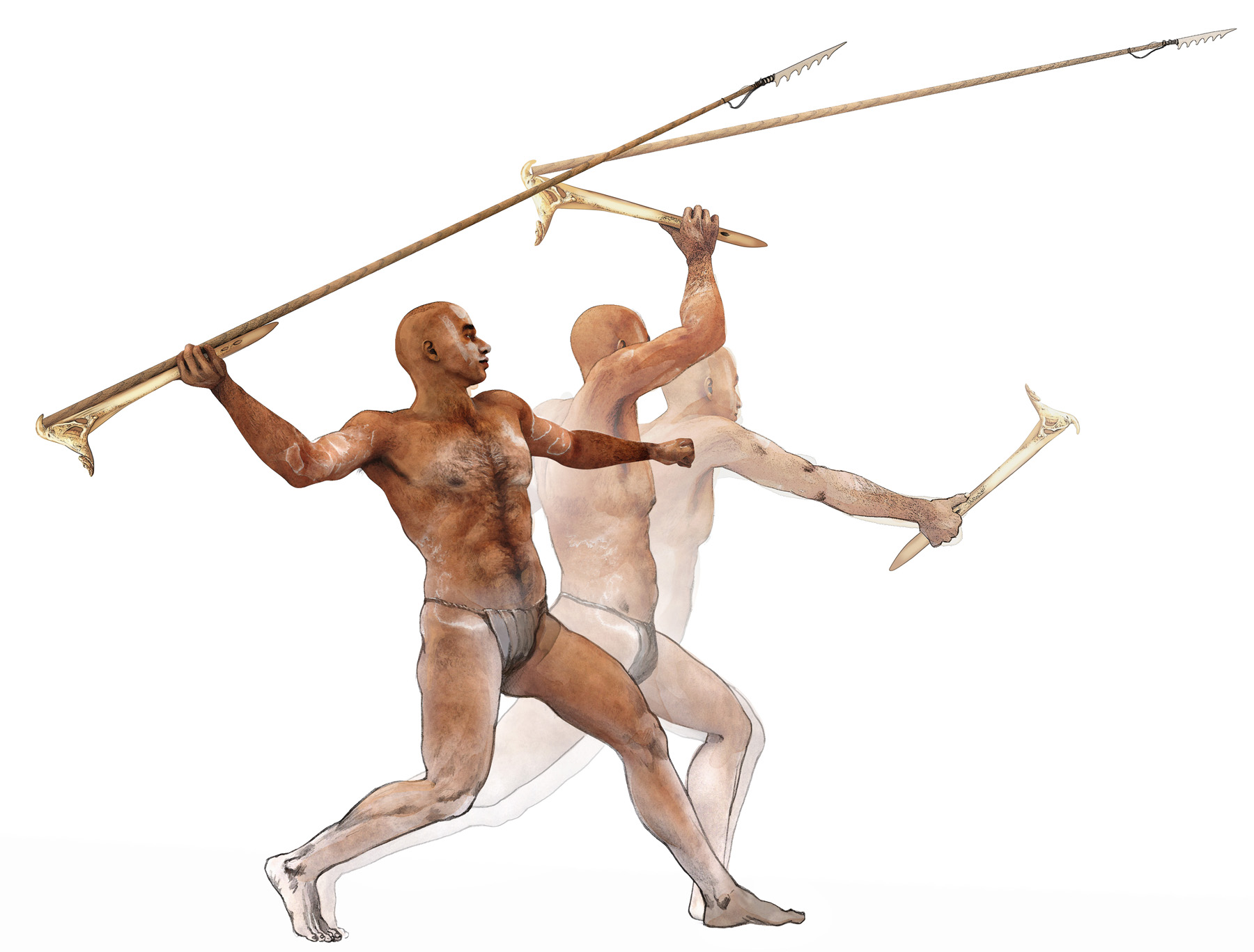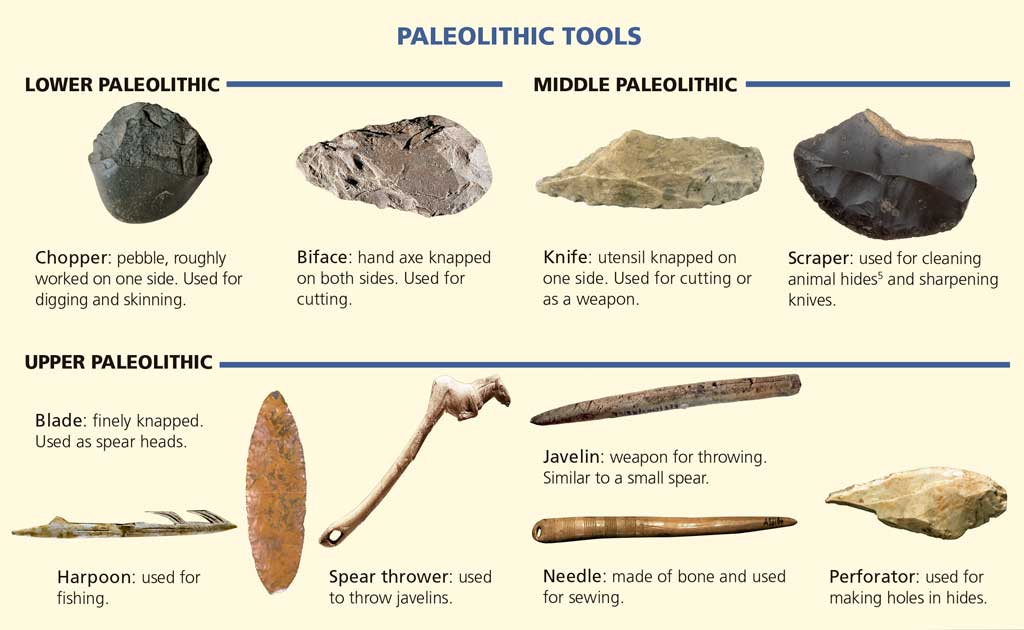This final lesson corresponds to section 6, page 170 of your book.
We end this unit with religion and the most important cultural legacy of Greece beside art: philosophy.
This is the presentation (sorry, there are no oral comments)
And to end with this unit you can do this final test to check how much you have learned.
Monday, 22 June 2020
Thursday, 18 June 2020
Unit 10, lesson 5: Greek art
In this lesson we are going to study Greek art. This lesson is very important because Greek art is the source of almost all artistic styles in Europe until the 20th century AD: you can see Greek forms in plenty of works of art.
You can find these contents in pages 172-175 of your book.
This is the presentation of the contents.
This version contains comments in English
And this one is in Spanish (I suggest that you watch this one for learning the translation of architectural vocabulary).
There are plenty of Youtube videos if you want to learn more about art. The Smarthistory channel contains lots of stuff, I've chosen the following ones as the most representative of this lesson's content, but there are lots of others.
This video is about the characteristics of classical orders and how Greek orders influenced Roman and also modern architecture: you can see these orders everywhere! (you can choose Spanish subtitles if you want)
In this video you can see a commentary of the Doryphorus, look especially at the difference between archaic and classical Greek sculpture.
You can find these contents in pages 172-175 of your book.
This is the presentation of the contents.
This version contains comments in English
And this one is in Spanish (I suggest that you watch this one for learning the translation of architectural vocabulary).
There are plenty of Youtube videos if you want to learn more about art. The Smarthistory channel contains lots of stuff, I've chosen the following ones as the most representative of this lesson's content, but there are lots of others.
This video is about the characteristics of classical orders and how Greek orders influenced Roman and also modern architecture: you can see these orders everywhere! (you can choose Spanish subtitles if you want)
In this video you can see a commentary of the Doryphorus, look especially at the difference between archaic and classical Greek sculpture.
Monday, 15 June 2020
Unit 10, lesson 4: Alexander the Great and the Hellenistic period
In this lesson we are going to study the importance of the last period of Ancient Greek history: the Hellenistic period. We must pay special attention to the figure of Alexander the Great (Alejandro Magno in Spanish).
The essential information is at page 163, section 2.2 of your book, here there are more details if you want to learn more.
This is the presentation.
And here is my commentary on the presentation.
TASKS FOR NEXT THURSDAY:
Exercise 1 (This is similar to exercise 2 of page 163)
a) What were the geographical limits of Alexander the Great's empire? Describe them making reference to geographical accidents (mountain ranges, seas or rivers), you can see them on this map.
Example: In Europe, Alexander's empire dominated the largest part of the Balkan Peninsula: the northern frontier was at the Danube River.
b) Look at the map on page 163 of your book. What are the names of the modern countries where the cities with Alexander's name (Alexandria, Alexandropolis) are located?
Example: there was one city called Alexandria in each one of these modern countries: Turkmenistan, Tajikistan and Kyrgyzstan.
Exercise 2 :
Answer these questions using the information below.
1. Why do some people say that Alexander was a villain (a bad person)?
2. Why do other people say he was a hero?
3. What is your opinion: do you think he was a villain or a hero? Why?
A) Villain
 Source of this exercise: https://nsms6thgradesocialstudies.weebly.com/uploads/3/7/2/4/37241339/alexander_the_great.pdf
Source of this exercise: https://nsms6thgradesocialstudies.weebly.com/uploads/3/7/2/4/37241339/alexander_the_great.pdf
The essential information is at page 163, section 2.2 of your book, here there are more details if you want to learn more.
This is the presentation.
And here is my commentary on the presentation.
TASKS FOR NEXT THURSDAY:
Exercise 1 (This is similar to exercise 2 of page 163)
a) What were the geographical limits of Alexander the Great's empire? Describe them making reference to geographical accidents (mountain ranges, seas or rivers), you can see them on this map.
Example: In Europe, Alexander's empire dominated the largest part of the Balkan Peninsula: the northern frontier was at the Danube River.
b) Look at the map on page 163 of your book. What are the names of the modern countries where the cities with Alexander's name (Alexandria, Alexandropolis) are located?
Example: there was one city called Alexandria in each one of these modern countries: Turkmenistan, Tajikistan and Kyrgyzstan.
Exercise 2 :
Answer these questions using the information below.
1. Why do some people say that Alexander was a villain (a bad person)?
2. Why do other people say he was a hero?
3. What is your opinion: do you think he was a villain or a hero? Why?
A) Villain
Was Alexander the Great really great? Or was he an evil conqueror? Those who see him as cruel give this as evidence against Alexander. They say he:
• destroyed Persepolis
• attacked Tyre, killing 10,000 people and enslaving 30,000
• treated his slaves harshly
• ordered the murder of several close advisers.
Many legends about Alexander have been told. This one says he was a devil:
“The following is my favourite story which is found all the way from Turkey to Kazakhstan: Iskander [Alexander] was actually a devil and he had horns. But his hair was long and wavy and the horns were never seen. Only his barbers knew. But he feared they could not keep the secret. So, he killed them when they discovered. His last barber pretended not to notice and kept the secret. Eventually though he could bear it no longer and, as he could tell no one, he ran to a well and called down the well: ‘Iskander has horns!’ But in the bottom of the well were whispering reeds [used in flutes] and they echoed the story until it went round the whole world.”
—Michael Wood, “In the Footsteps of Alexander the Great” (see the note at the end).
Vocabulary:
a devil - un diablo
horns - cuernos
to bear (verb) - soportar, aguantar
a well (noun) - un pozo
a whispering reed - un junco que susurra (más que un junco es una caña, con ellas se hacían flautas)
________
B) Hero
Other historians consider Alexander the Great to be a hero. They claim he brought progress, order, and culture to each new land he conquered. In support of him, they say Alexander
• tried to promote learning
• visited all of his wounded men after each battle
• spared (saved) the lives of the queen and princess of Persia
• built new cities where others had been destroyed.
Arrian, a Greek historian who lived in the 2nd century A.D., wrote about Alexander this way:
“I think there was at that time no race of men, no city, nor even a single individual who did not know about Alexander’s name and fame. For this reason it seems to me that a hero totally unlike any other human being could not have been born without the help of gods.”
—Arrian, The Anabasis of Alexander
On two points all historians agree:
Alexander was a brilliant general and he was a brave fighter. He once said this to his men:
“There is no part of my body that is free from wounds. (...) I have been wounded with the sword in close fight, I have been shot with arrows, and I have been struck with projectiles from engines of war; and though often I have been hit with stones and bolts of wood for protecting your lives, your glory, and your wealth, I am still leading you as conquerors over all the land and sea, all rivers, mountains, and plains. I have celebrated your weddings with my own, and the children of many of you will be akin to my children.”
—Arrian, The Anabasis of Alexander
Vocabulary:
to agree - estar de acuerdo
wounds - heridas
arrows - flechas
bolts - flechas (en este caso)
weddings - bodas
to be akin to somebody - ser parientes
Note: the legend about Alexander's horns has a real basis: in some Hellenistic coins, Alexander's head was represented with horns: a symbol of the Egyptian god Amun. (After Alexander's death he was considered like a god, the same as Egyptian pharaohs or, later, Roman emperors).
 Source of this exercise: https://nsms6thgradesocialstudies.weebly.com/uploads/3/7/2/4/37241339/alexander_the_great.pdf
Source of this exercise: https://nsms6thgradesocialstudies.weebly.com/uploads/3/7/2/4/37241339/alexander_the_great.pdfMonday, 8 June 2020
Unit 10, lesson 3: Life and politics in Sparta and Athens
(The task for this week is at the end of this entry).
In this lesson I have condensed sections 3, 4 and 5 of unit 10 of your book. The most important part is section 3, page 164: Spartan oligarchy and Athenian democracy.
In the presentation there is more information that may help you understand:
Since there are many different topics I haven't recorded an oral explanation. I prefer that you watch this video.
This one is a little bit more complicated, it may help you understand the differences between Ancient Greek and modern democracy.
If you're interested in learning more about life in Sparta and Athens, you can watch this video:
__________
TASK FOR THIS WEEK (Friday)
Do exercises 1, 2, 3 and 5 of page 179 of your book.
In this lesson I have condensed sections 3, 4 and 5 of unit 10 of your book. The most important part is section 3, page 164: Spartan oligarchy and Athenian democracy.
In the presentation there is more information that may help you understand:
- How the poleis developed oligarchic governments in the Archaic period.
- How some of them (such as Athens) switched from oligarchy to democracy.
- How Sparta was different from other poleis and continued to be an oligarchy.
- How the different characteristics of the inhabitants (jobs, wealth, social groups) had an influence in politics and daily life.
Since there are many different topics I haven't recorded an oral explanation. I prefer that you watch this video.
This one is a little bit more complicated, it may help you understand the differences between Ancient Greek and modern democracy.
If you're interested in learning more about life in Sparta and Athens, you can watch this video:
__________
TASK FOR THIS WEEK (Friday)
Do exercises 1, 2, 3 and 5 of page 179 of your book.
Tuesday, 2 June 2020
Unit 10, lesson 2: The classical period
(At the end of the entry there are instructions for the exercise).
In this lesson we are going to study the classical period of the history of Greece (section 2.1 of pages 162-163 of your book).
This is the presentation:
And this video contains comments in Spanish about the presentation.
In the next lesson we are going to continue studying the political organisation of Sparta and Athens in this period (page 164).
__________
TAREA para este jueves: ejercicio 1 de la pág. 162.
Explicación del ejercicio:
Completando la tabla vamos a resumir lo más importante de las Guerras Médicas y de la Guerra del Peloponeso:
In this lesson we are going to study the classical period of the history of Greece (section 2.1 of pages 162-163 of your book).
This is the presentation:
And this video contains comments in Spanish about the presentation.
In the next lesson we are going to continue studying the political organisation of Sparta and Athens in this period (page 164).
__________
TAREA para este jueves: ejercicio 1 de la pág. 162.
Explicación del ejercicio:
Completando la tabla vamos a resumir lo más importante de las Guerras Médicas y de la Guerra del Peloponeso:
- "Protagonists in conflict": aquí con "protagonistas" nos referimos a las ciudades o países, más que a los individuos. ¿Qué ciudades o reinos se enfrentaron en cada bando de la guerra?
- "Causes of the conflict" ¿Cuáles fueron las causas del conflicto?, es decir, ¿por qué motivos empezó la guerra?
- "Consequences of the conflict": ¿Cuáles fueron las consecuencias del conflicto?, o dicho de otra manera: ¿qué bando ganó la guerra, qué ventajas obtuvo, cómo quedó la situación en Grecia, qué pasó con los perdedores...?
Thursday, 28 May 2020
Unit 10. Greece. Lesson 1: Early Greek history and the Archaic Period
This is the first lesson of a of a new unit: Greece.
The Greek civilisation is at the origin of modern European civilisation and culture. It is very important that we study the Greek origins of a lot of elements that are still part of our life:
This is the presentation. The part about the second millennium (slides 3 to 7) is indicated as extra content.
I have recorded my comments in two parts, just in case you want to skip the first part about the Minoan and Mycenaean periods.
The Greek civilisation is at the origin of modern European civilisation and culture. It is very important that we study the Greek origins of a lot of elements that are still part of our life:
- Greek mythology, which has influenced art and literature until modern times.
- Greeks invented the word "history" and history, as a narrative of the past that was independent from myths and religious stories.
- Philosophy is another Greek invention.
- The Olympic Games.
- Democracy.
- Greek art was the model of all later artistic styles, at least until the 20th century.
This is the presentation. The part about the second millennium (slides 3 to 7) is indicated as extra content.
I have recorded my comments in two parts, just in case you want to skip the first part about the Minoan and Mycenaean periods.
Thursday, 21 May 2020
Unit 8/9. Lesson 5: Art in Mesopotamia and Egypt
This is the final lesson of this unit. We are going to study basically the art of Ancient Egypt but it's necessary to mention a little bit of Mesopotamian art.
This is the presentation. In your book you can also read sections 5.2 and 5.3 of page 134 about Mesopotamian art and sections 6.2 and 6.3 of page 152 about Egyptian art.
I've also uploaded the presentation in video format, with my comments, if you prefer:
Here I give you a bilingual wordlist with terms of art history that we have come across:
Beam: viga
Gate: puerta (entrada monumental)
Hypogeum: hipogeo
Hypostyle hall: sala hipóstila
Lintel: dintel
Post-and-lintel architecture: arquitectura adintelada o arquitrabada
Relief: relieve (escultórico). There are two main types of relief.
Next Monday we are going to do some test or exercises to finish this lesson and then we will start studying Greece.
If you are interested in learning more about Mesopotamian and Egyptian sculpture, here I post some videos for the weekend.
In the first lesson we saw the victory stele of Naram-Sin of Akkad (3rd millennium BC).
This video is about the relief decoration of Ashurbanipal's palace (7th century BC)
This video is a little bit longer. It talks about Hatshepsut, her monuments and Egyptian history in general
Akhenaten's religious reform also affected the rules of Egyptian art:
And finally this video is about the Judgement of Osiris, Egyptian painting and writing:
This is the presentation. In your book you can also read sections 5.2 and 5.3 of page 134 about Mesopotamian art and sections 6.2 and 6.3 of page 152 about Egyptian art.
I've also uploaded the presentation in video format, with my comments, if you prefer:
Here I give you a bilingual wordlist with terms of art history that we have come across:
Beam: viga
Gate: puerta (entrada monumental)
Hypogeum: hipogeo
Hypostyle hall: sala hipóstila
Lintel: dintel
Post-and-lintel architecture: arquitectura adintelada o arquitrabada
Relief: relieve (escultórico). There are two main types of relief.
- High relief is a relief were the figures stand out of the wall, although they are not separated from it (altorrelieve)
Triad of Mykerinos: high relief - Low relief or bas-relief is a relief were the figures stand out very little on the surface of the wall (bajorrelieve)

Low relief: the wounded lioness from Ashurbanipal's palace (Nineveh, Assyria) - Egyptians also practised sunk relief, which is sculpted at a lower level than the surrounding wall (relieve hundido)

Horus (sunk relief)
Next Monday we are going to do some test or exercises to finish this lesson and then we will start studying Greece.
If you are interested in learning more about Mesopotamian and Egyptian sculpture, here I post some videos for the weekend.
In the first lesson we saw the victory stele of Naram-Sin of Akkad (3rd millennium BC).
This video is about the relief decoration of Ashurbanipal's palace (7th century BC)
This video is a little bit longer. It talks about Hatshepsut, her monuments and Egyptian history in general
Akhenaten's religious reform also affected the rules of Egyptian art:
And finally this video is about the Judgement of Osiris, Egyptian painting and writing:
Monday, 18 May 2020
Unit 8/9. Lesson 4: Egyptian religion
Today we are studying Egyptian religion.
This is the presentation. You can find more information about Egyptian religion at page 150 of your book. On page 153 there is a drawing with the structure of an Egyptian temple.
Now complete this form to demonstrate that you have read and understood this lesson.
Do exercise 1 of page 150. Complete the table with three gods that appear in the book and another god or goddess that is not in the book. Find also where there was a temple in Egypt for each one of the four gods.
This is the presentation. You can find more information about Egyptian religion at page 150 of your book. On page 153 there is a drawing with the structure of an Egyptian temple.
Now complete this form to demonstrate that you have read and understood this lesson.
Do exercise 1 of page 150. Complete the table with three gods that appear in the book and another god or goddess that is not in the book. Find also where there was a temple in Egypt for each one of the four gods.
Tuesday, 12 May 2020
Unit 8/9. Lesson 3. The history of Egypt
"Homework" for Thursday:
Before doing these tasks, read page 142 of the book and watch this presentation. There is no form to complete today.
- Do exercises 1, 3 and 4 of page 142.
- Answer this question: Why is it a bad idea to call Egypt an empire instead of a kingdom?
Before doing these tasks, read page 142 of the book and watch this presentation. There is no form to complete today.
Thursday, 7 May 2020
Unit 8/9. Lesson 2. The invention of writing
As you have studied in the previous unit, the difference between prehistory and history proper is writing. Mesopotamians invented the first writing system. The other river civilisations (Egypt, India, China) also invented their own writing systems: of all these, Chinese script is the only writing system that is still in use.
In the presentation you can see how Mesopotamians and Egyptians invented writing, the basic characteristics of their writing systems and what they used them for. In your book, there is some information about cuneiform writing at page 134 (section 5.1) and hieroglyphic script at page 152 (section 6.1)
It is important that you understand that not all the civilisations in the word discovered writing at the same time. The peoples that had writing systems are considered historical civilisations, those peoples that could not write are prehistorical, even if they lived at the same time.
This video shows you the origins of writing systems in the world.
In this animated map you can see how writing systems expanded throughout Europe from 2000 BC until AD 2019 (you don't need to watch the whole video, just click at different moments to see how the map changes).
Answer this form to see if you have understood the lesson. There are only 3 questions today.
In this website you can use a simplified form of hieroglyphic script to write your name. Send a picture of your name to the teacher if you like it! This is how the teacher's name looks like:
In the presentation you can see how Mesopotamians and Egyptians invented writing, the basic characteristics of their writing systems and what they used them for. In your book, there is some information about cuneiform writing at page 134 (section 5.1) and hieroglyphic script at page 152 (section 6.1)
It is important that you understand that not all the civilisations in the word discovered writing at the same time. The peoples that had writing systems are considered historical civilisations, those peoples that could not write are prehistorical, even if they lived at the same time.
This video shows you the origins of writing systems in the world.
In this animated map you can see how writing systems expanded throughout Europe from 2000 BC until AD 2019 (you don't need to watch the whole video, just click at different moments to see how the map changes).
Answer this form to see if you have understood the lesson. There are only 3 questions today.
In this website you can use a simplified form of hieroglyphic script to write your name. Send a picture of your name to the teacher if you like it! This is how the teacher's name looks like:
Monday, 4 May 2020
Unit 8/9 - Lesson 1. Introduction. The river civilisations
The questions that we are going to ask ourselves are:
– Why did the first historical civilisations appear in the valleys of great rivers?
– What distinctive features do those historical civilisations share?
We are going to focus on the two of those civilisations that had most influence on the modern European civilisation: Mesopotamia and Egypt. Both of them emerged at the ends of the Fertile Crescent area, which you know well from the previous lesson. In the next lessons we shall focus on the history of Egypt, which is simpler than the history of the Mesopotamian kingdoms and empires.
This is the presentation on the contents of this lesson. In some slides there is a reference to the pages of your book where you can read extra information.
Some important vocabulary for this lesson:
- To dig: to make a hole in the ground: to dig a canal.
- Irrigation: watering plants with an artificial method, usually for agriculture. You can bring water into the plants from a river by a canal, or using a pump, or dig a well to get the water.
- Flood: a period of high water level in a river, when the water goes out of the normal river bed.
- Slime: the wet mud that you can find in a river. After a flood, the flooded areas are covered with slime.
- To sow: to plant seeds.
- Ruler (person): the person who leads the government of a country. The pharaoh was the ruler of Ancient Egypt.
- Public works
- To settle a dispute
- Stratum (plural strata): a layer, a level in a vertical succession. Archaeologists dig in their excavations looking for the strata in the subsoil which contain remains from the past
This is also time to remember the geography of the Fertile crescent area, which you have studied this year. You will need it for the test.
Once you have read the contents of the lesson, fill in the form below to prove you have read and understood this.
You should receive an e-mail asking you for some exercises.
Once you have read the contents of the lesson, fill in the form below to prove you have read and understood this.
You should receive an e-mail asking you for some exercises.
Tuesday, 21 April 2020
Unit 7 - Lesson 8. The Neolithic and the Metal Ages in Spain. Megalithic monuments
This is the last "lesson" of unit 7. I'm not posting a new one on Thursday: it's Castile and León Day
Next week we will do an activity or a test to see if you have understood the whole unit of Prehistory.
__________
(You can see the information about this in your book. Pages 116-119)
The Neolithic period in the Iberian Peninsula
Agriculture and livestock farming started in the Iberian Peninsula later than in the Fertile Crescent, around 5000 BC.
Cardium pottery ("cerámica cardial") is the most characteristic form of art of this this period. This name comes from Cardium edule, a species of cockle (a mollusc that we call berberecho in Spanish). The shells of Cardium were used for decorating pottery:
The Copper Age and megalithic monuments (c. 2500-2000 BC)
There were a lot of copper and tin deposits in the Iberian Peninsula. People from the East came searching for metals.
A characteristic form of pottery came with trade: the bell beaker ("vaso campaniforme"), a type of vase that existed in all Western Europe at the end of the Copper Age
The Bronze Age in the Iberian Peninsula (c. 2000-1000 BC)
Next week we will do an activity or a test to see if you have understood the whole unit of Prehistory.
__________
(You can see the information about this in your book. Pages 116-119)
The Neolithic period in the Iberian Peninsula
Agriculture and livestock farming started in the Iberian Peninsula later than in the Fertile Crescent, around 5000 BC.
Cardium pottery ("cerámica cardial") is the most characteristic form of art of this this period. This name comes from Cardium edule, a species of cockle (a mollusc that we call berberecho in Spanish). The shells of Cardium were used for decorating pottery:
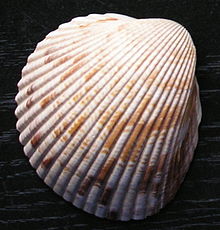 |
| Cardium edule shell |
 |
| The decoration of Cardium pottery was made with the edge of Cardium shells and with other sharp objects |
The Copper Age and megalithic monuments (c. 2500-2000 BC)
There were a lot of copper and tin deposits in the Iberian Peninsula. People from the East came searching for metals.
A characteristic form of pottery came with trade: the bell beaker ("vaso campaniforme"), a type of vase that existed in all Western Europe at the end of the Copper Age
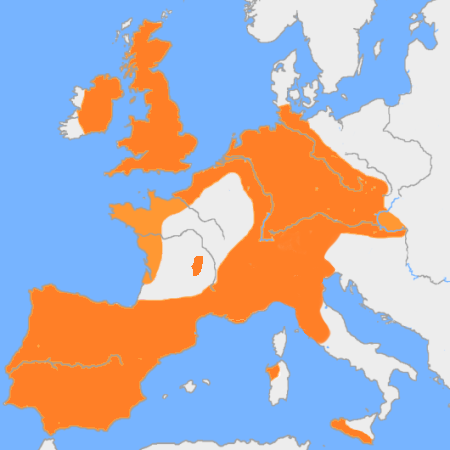 |
| Areas of Europe with bell beakers |
 |
| A bell beaker: a recipient with the shape of a bell |
The same people that made bell beakers made spectacular constructions called megalithic monuments or monuments made of gigantic stones. These monuments had a religious or magical meaning.
The most simple megalithic construction is just a large vertical stone: a menhir
A stone row ("alineamiento") is a series of menhirs forming a line.
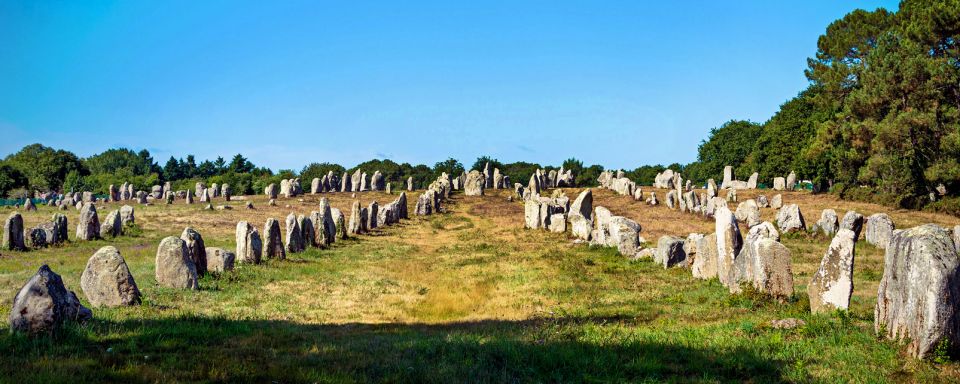 |
| Stone rows of Carnac, France |
A cromlech is a megalithic construction in circle. The most famous cromlech is Stonehenge, in England. The monument is oriented to the Sun on summer solstice: the monument has a religious meaning.
A dolmen is a megalithic construction made of vertical stones, situated as walls, and a large horizontal stone, in the shape of a roof. Originally, these constructions were covered with earth. They were tombs, for burying people.
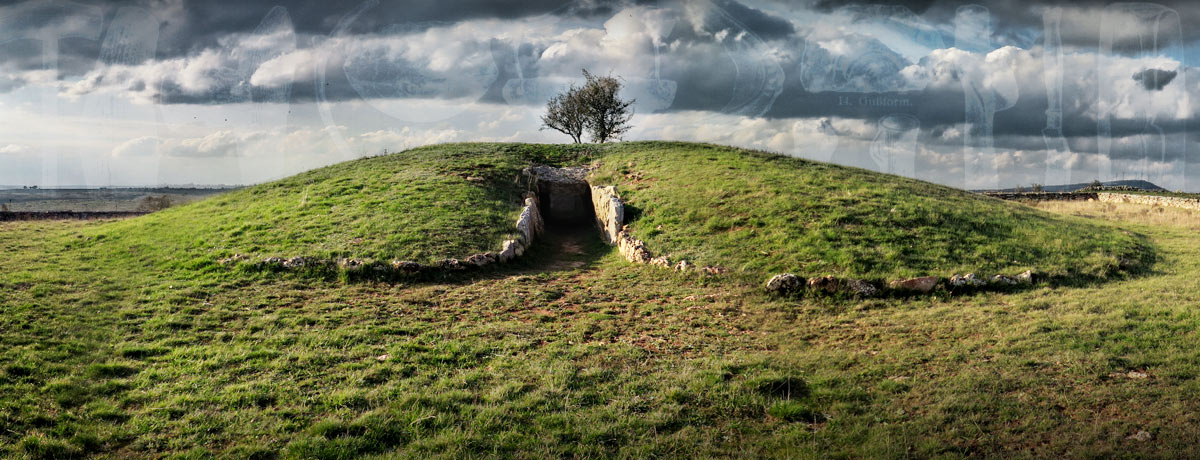 |
| This is how a dolmen originally looked like |
When the dolmen has an entrance covered with stones, it is called a corridor tomb.
 |
| A corridor tomb from inside |
There are a lot of megalithic constructions in the European Atlantic coast, from the west of the Iberian Peninsula to the Baltic Sea and from Southern Italy to the British Isles.
In the South-East of the Iberian Peninsula (Málaga, Almería), the culture of Los Millares produced dolmens and corridor tombs, called "cuevas" by local people: the most famous one is the Menga cave ("Cueva de Menga") (see page 119 of your book).
The Bronze Age in the Iberian Peninsula (c. 2000-1000 BC)
 |
| Bronze Age cultures in the Iberian Peninsula. Tin mines are very important for bronze. |
The most important remains from the Bronze Age in the Iberian Peninsula are the culture of El Argar, in South-East Spain, and the Talaiotic culture in Majorca and Minorca.
The Talaiotic culture is characterised by three types of characteristic stone buildings:
Taula (the name in Catalan means table, we do not know the purpose of this type of megalithic construction).
Talaiot (the Catalan name is related to the Spanish word "atalaya"): a defensive watchtower (a tower for watching the enemies).
Naveta (the name means that it has the shape of a ship, "nave", upside down): a collective tomb for burying a lot of people.
In the centre of the Iberian Peninsula, the culture of Cogotas I was the most important in the Bronze Age. The most important towns with walls ("castros") of this culture are located in the province of Ávila: Las Cogotas, Ulaca, La Mesa de Miranda.
 |
| Cogotas I pottery (Museo Arqueológico Nacional, Madrid) |
The most visible parts of Las Cogotas archaeological site today are from the Iron Age, though.
The Iron Age in the Iberian Peninsula (1st millennium BC)
Colonisers from the Eastern Mediterranean introduced iron in the Iberian Peninsula. They also introduced writing, so history starts with them: Phoenicians, Greeks and Carthaginians.
Tartessos was the most developed culture from the Iberian Peninsula, in the region of the Guadalquivir mouth.
Phoenicians and Greeks wrote legends about Tartessos. Some authors think that the name "Tarshish" in the Bible also means Tartessos.
| Tesoro del Carambolo, from the Tartessian civilisation (we do not know if the jewels were made by Tartessians or by Phoenicians) |
In the interior region, Iberian and Celtic peoples made defensive castros.
 |
| Defensive methods (Las Cogotas): walls and sharp stones on the ground in front |
 |
| "Verraco" from Las Cogotas in Ávila. This is the most typical element of the Iron Age Celtiberian cultures |
Monday, 20 April 2020
Unit 7 - Lesson 7. The Metal Ages
Today's lesson corresponds to pages 114-115 of your book.
Have a look at this presentation:
Today, I'm giving you a glossary with the Spanish translation of some basic words from this lesson:
Copper - cobre
Tin - estaño
Bronze - bronce
Iron - hierro
Ore (copper ore, etc.) - mineral (metálico: mineral de cobre, etc.)
Smith - herrero
Forge - forja (o fragua)
Foundry - fundición
Cast - molde (para metal fundido)
Cart - carro
Potter's wheel - torno de alfarero
Plough (in American English, the spelling is plow) - arado
Sail - vela
In this video English kids explain you how an axe was made in the Bronze Age:
Please answer the questions of this form.
Have a look at this presentation:
Today, I'm giving you a glossary with the Spanish translation of some basic words from this lesson:
Copper - cobre
Tin - estaño
Bronze - bronce
Iron - hierro
Ore (copper ore, etc.) - mineral (metálico: mineral de cobre, etc.)
Smith - herrero
Forge - forja (o fragua)
Foundry - fundición
Cast - molde (para metal fundido)
Cart - carro
Potter's wheel - torno de alfarero
Plough (in American English, the spelling is plow) - arado
Sail - vela
In this video English kids explain you how an axe was made in the Bronze Age:
Please answer the questions of this form.
Tuesday, 14 April 2020
Unit 7 - Lesson 6. The Neolithic period
Update: the form is ready. Please scroll down to the end of this post and fill in the form. It gives your "marks" automatically at the end.
First of all, answer this question in your mind:
What is the most important difference between the Palaeolithic and the Neolithic?
Why do we talk about the "Neolithic Revolution"?
–Later you are going to see if your mental answer is right or not.
Today we are going to start by reviewing some English vocabulary. Please make sure you know these words before studying the lesson.
Millet (mijo) is not so common in modern diet.
This is the presentation about the Neolithic period. It corresponds to pages 112-113 of your book.
First of all, answer this question in your mind:
What is the most important difference between the Palaeolithic and the Neolithic?
Why do we talk about the "Neolithic Revolution"?
–Later you are going to see if your mental answer is right or not.
Today we are going to start by reviewing some English vocabulary. Please make sure you know these words before studying the lesson.
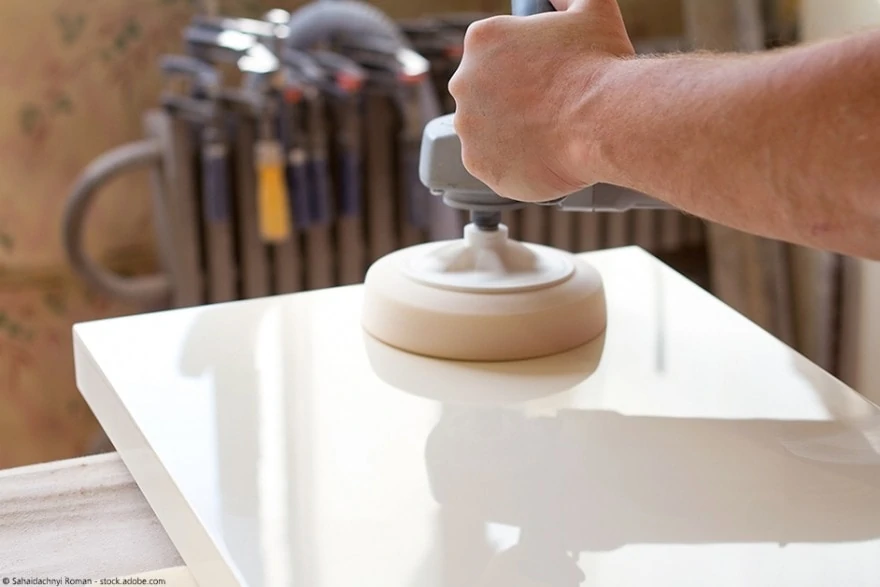 |
| This man is polishing a piece of marble |
 |
| This towel is made of fabric... |
 |
| ...And this is not "a fabric"! It is a factory where machines weave fabric. (Weave = tejer) |
 |
| This is a craftsman, or an artisan: a person who makes things with his hands. |
 |
| This is a sickle: a tool for cutting grass or harvesting cereal |
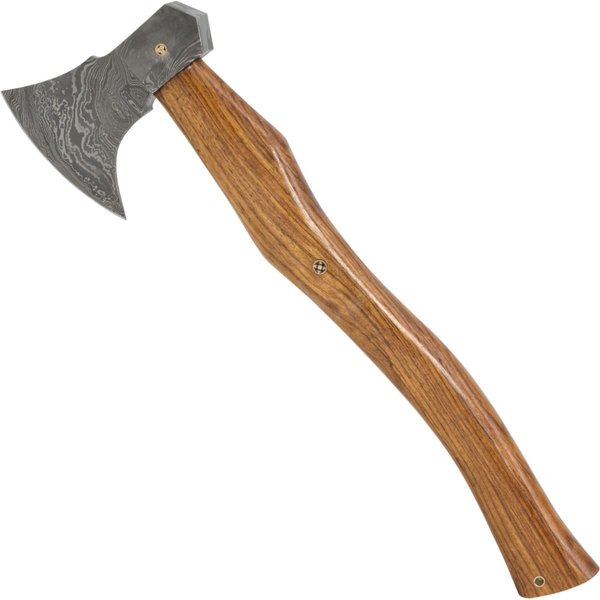 |
| This is an axe |
 |
| This is a hoe (Spanish: azada) |
 |
| This is a wind mill for grinding cereal (and producing flour) |
Wheat is the most common cereal (in the Western world): most bread is made of wheat flour.
In East Asia and in other parts of the world, the most common cereal is rice. Maize (or corn) is a cereal that comes from America.
You can also make bread out of rye (centeno) flour, but this kind of bread is dark.
Barley (cebada) is mainly used for feeding animals, and also to produce beer.
Oats (avena) is the favourite food for horses.
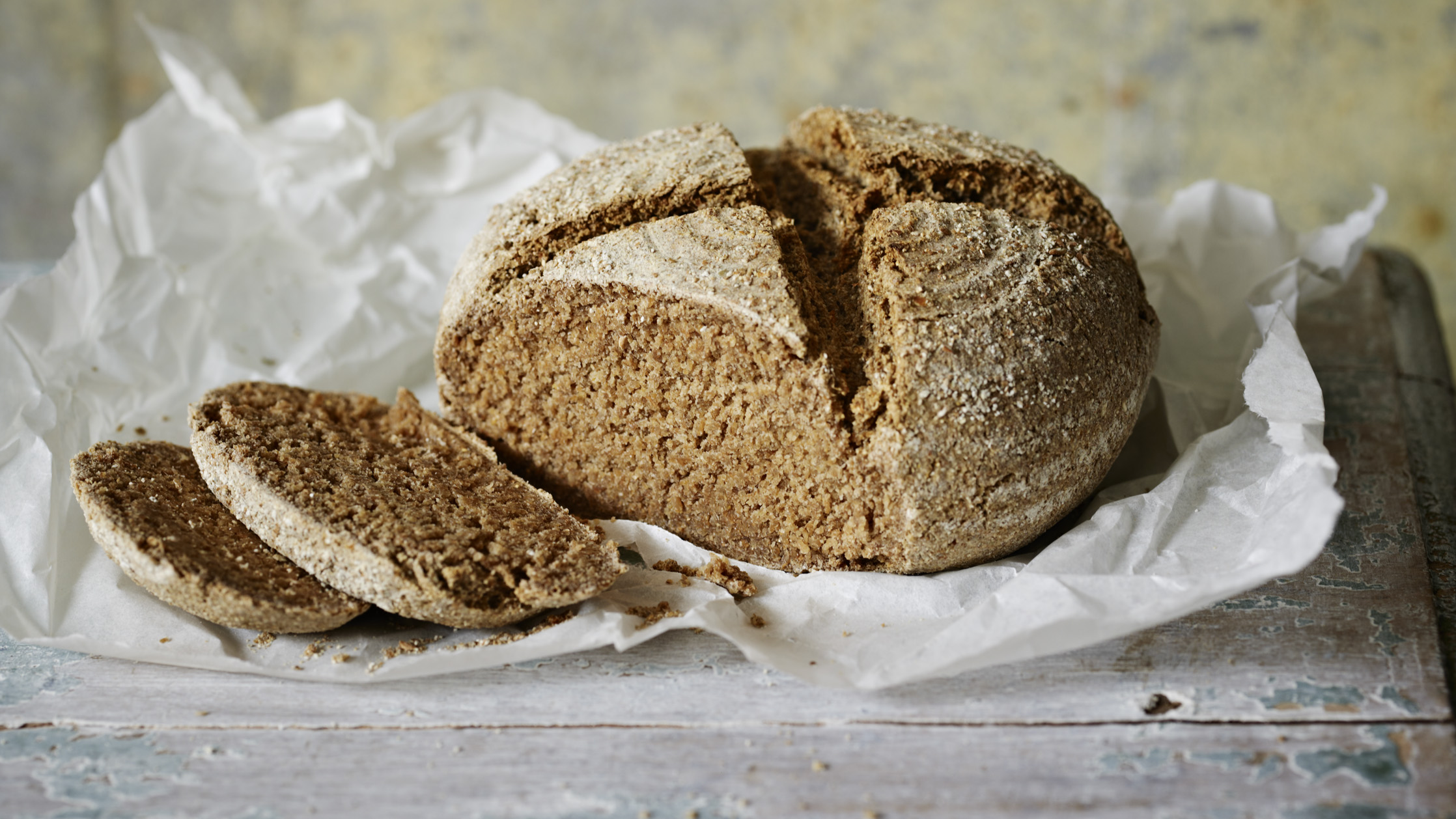 |
| Rye bread |
A farmer is a person who works in a farm. There are two types of farming:
- Agriculture: raising crops (plants for eating: cereals, vegetables...)
- Livestock farming: raising domestic animals, or farm animals: hens, rabbits, pigs, cattle (cows, bulls, etc. Livestock are all the farm animals in general. Cows and all the livestock of the same species are called cattle.
Some domestic animals:
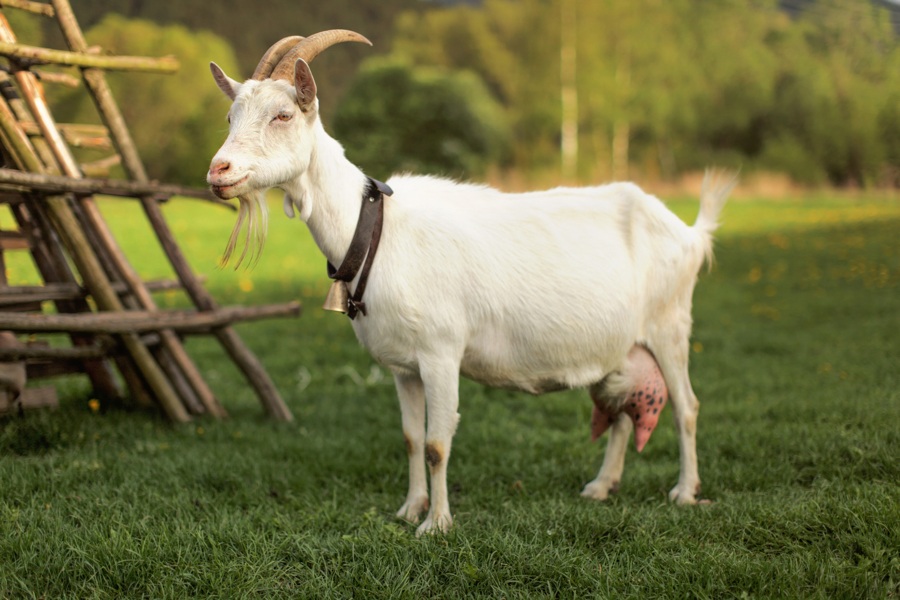 |
| A goat. |
 |
| Cattle: a bull (adult male), a cow (adult female) and a calf. A castrated bull is an ox (plural: oxen) |
This is the presentation about the Neolithic period. It corresponds to pages 112-113 of your book.
In this video you can see a woman weaving on a Neolithic loom:
Thursday, 2 April 2020
Unit 7 - Lesson 5. The Palaeolithic period: society, rituals and beliefs
_______
This is our last lesson about the Palaeolithic period. After Easter holidays we'll continue studying the Neolithic.
In this lesson we are going to study pages 110-111 of your book.
First of all, some vocabulary that you may find here or in the book:
- A burial: when people die, you bury them: you dig a hole (this is called a grave) and you put the corpse (the dead person's body) inside. Then you cover it with earth, or with a stone.
- A healer: To heal a person is to make them recover from an illness. In a primitive society there are no doctors to heal people: healers tried to do their job using magic rituals.
- A shaman: a person that practises magic in primitive societies. ("Chamán")

This person has religious beliefs - A belief: something that you believe.
- Veneration: deep respect for somebody.
- An idol: an object that represents something or somebody that is venerated or adored as a god.
- A spear: a weapon that consists of a long stick and a sharp point (in the Paleolithic period this part was made of stone). ("Lanza" o "azagaya")
- A spear thrower: a tool for throwing a spear at long distances. ("Propulsor")
In this video you can see the Paleolithic technique for making hand stencils:
Here I leave you a link to extra interactive material about the Palaeolithic. Click the "talking book" buttons and listen to the audio. WARNING: in the activities, you can't use the buttons that say "Guardar respuesta", because we can't register for that.
The Paleolithic period
__________
For homework, you are going to send to my e-mail your answers to exercises 1, 5 and 6 of pages 110 and 111 of the book. You have time until 14th April, but it's better if you do it soon, and then you've got the rest of the holidays free. Let me know if there is any difficulty.
Just in case you don't understand exercise 1, this is the same question in other words:
What differences do you think there were between the work of men and the work of women in the Palaeolithic? Did men and women do the same activities?
Monday, 30 March 2020
Unit 7 - Lesson 4. The Palaeolithic period: economy
Today's lesson corresponds to pages 108-109 of your book.
First of all, we must study some vocabulary:
First of all, we must study some vocabulary:
- A shelter: a safe place where the elements (wind, rain, cold...) don't affect you. You can use a cave or a tree... as shelters, to take refuge from bad weather.
- A dwelling: any place where you live: a house, a tent, a cave, a hut... To dwell is to live in a place (Spanish: "habitar").

A reindeer - A deer: a herbivorous wild animal. Male deer have big antlers on their head. (Deer is the same word for singular and plural: one deer, eight deer).
- Reindeer: a species of deer from the polar regions.
- A bison: A big and strong herbivorous wild bovid, with horns on its head. Very few bisons survive today in Europe and North America.
- A mammoth: an extinct species of hairy elephant that lived in cold regions thousands of years ago.
- A predator: an animal that hunts other animals for food.

Sewing - Hunting: capturing and killing animals for food.
- A scavenger: an animal that eats animal carcasses (dead animal bodies)
- To sew (careful! the pronunciation of this verb is exactly the same as to sow 'to plant seeds'):
To attatch two objects using a needle and thread. Sewing is a basic skill for making clothes. - An animal hide: the skin of an animal when it's cleaned and
treated for making clothes or shelters. When the skin has a lot of hair
and it's used for clothing, we call it fur. If it is without hair it is called leather (usually made of a cow's skin).
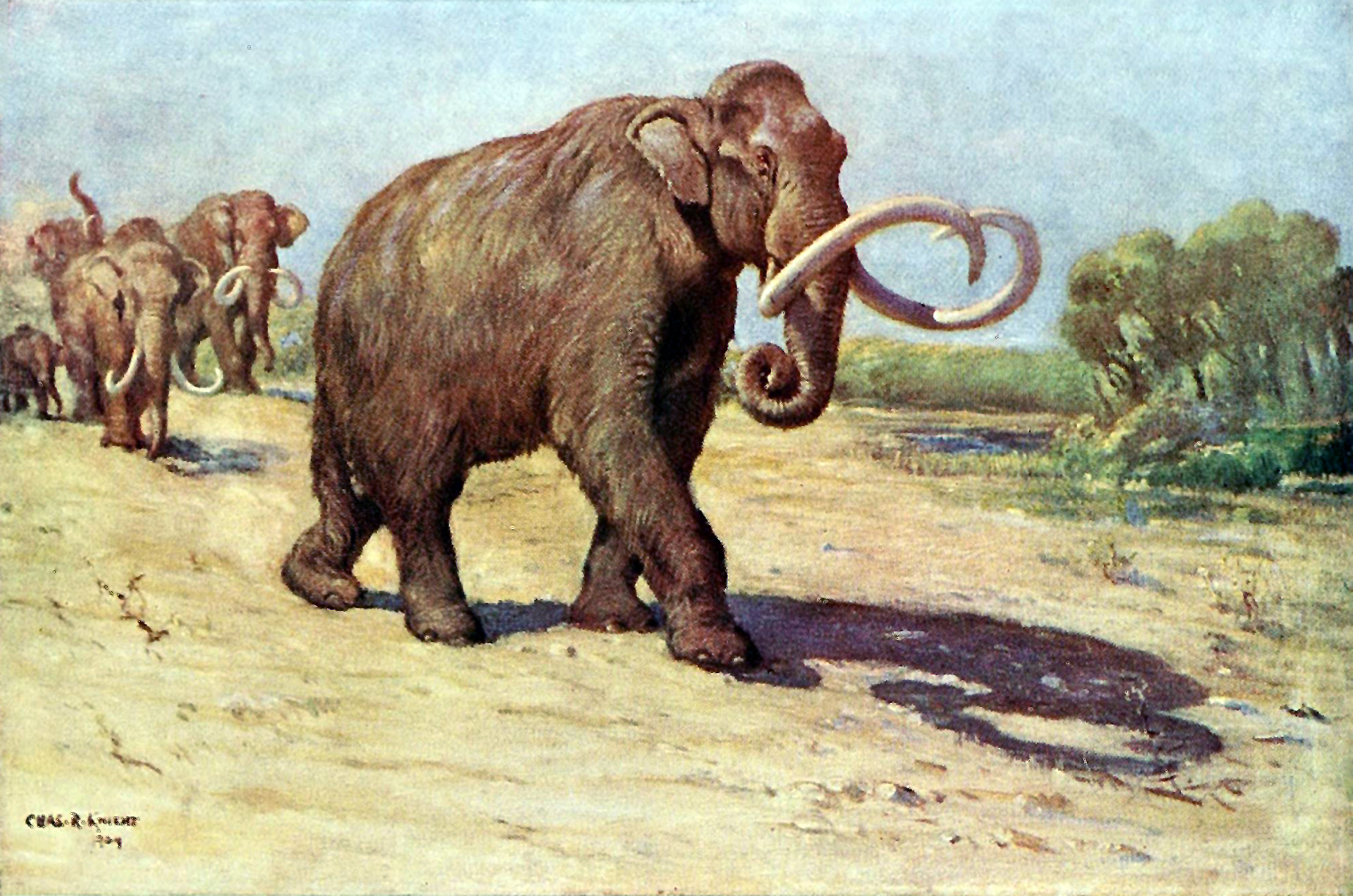
A mammoth 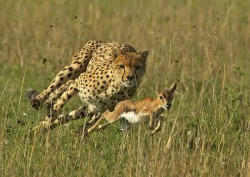
A predator (a cheetah) hunting a gazelle A European bison 
A tent made of animal hides We are studying the Palaeolithic period, the longest period of prehistory.You can spell this name as your book does (Palaeolithic) or just Paleolithic, as in Spanish.We know already that the Palaeolithic period started when the first hominids appeared: about 4.4 million years ago (mya).This is the presentation for today's lesson.In this illustration you can see some Palaeolithic tools (click to see it larger)In this video you can see how hominids made a biface and lit fire:----TaskToday there is no form to answer. You're going to do an exercise instead.You must search for information about a palaeolithic tool and complete a table like this example: -
Student’s nameVíctorName of the toolBifacePeriod of prehistoryLower PalaeolithicApproxi-
mate chronologyBetween
900 000 and
780 000 years agoHominid species that made this tool(Probably) Homo heidelbergensisMaterialStoneTechnique (how the tool was made)Knapping or carving (striking two stones against each other)Use of this toolThis tool was used for various purposes: cutting wood, butchering animals, , breaking animal bones, etc.The deadline is Friday 3rd April, but don't worry if you have any problems, just let me know.I'm going to send you an e-mail containing the link to the document that you must complete.You're all going to work on the same document, but each one of you have to do his/her task in a different page. (Like this you can see what the others are doing so that you don't repeat the same thing). Please be careful: don't write in your other classmates' pages. I have written your names on each one of the pages.
Subscribe to:
Comments (Atom)









